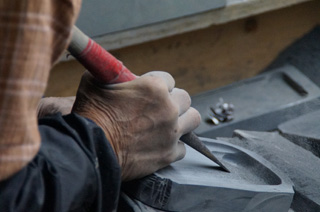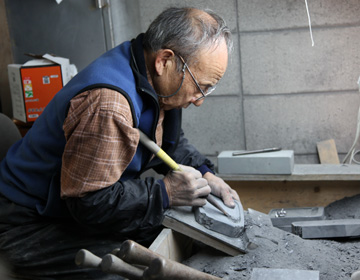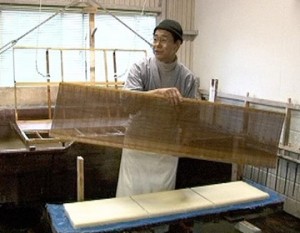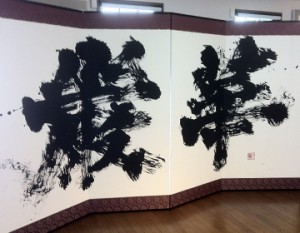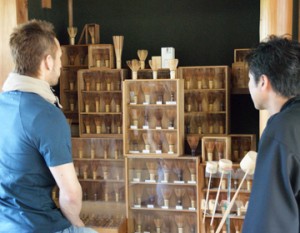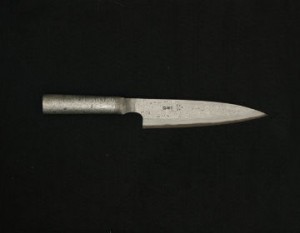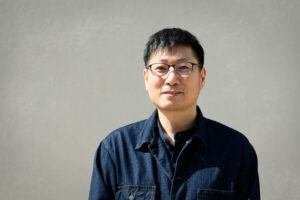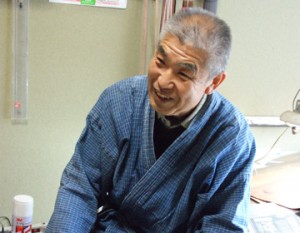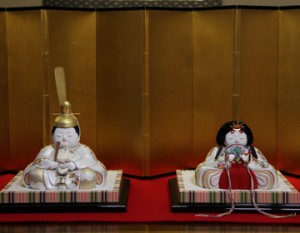Ogatsu ink stones with 600 years of history
Ogatsu ”suzuri” or inkstone, designated a National Traditional Artifact, is said to have its origin in the Muromachi period, some 600 years ago. According to an old document, the founder of Mutsu Sendai clan, Masamune Date, received an inkstone as an offering, and was very pleased with it. His son, the second lord of the clan、Tadamune Date, was so impressed by the beauty of the Ogatsu inkstone that he invited inkstone artisans to work for his court. He also designated the quarry that produced the Ogatsu stone as ”Otomeyama” to make Ogatsu inkstones exclusively.
The inkstone has fascinated many people ever since. The Ogatsu inkstones are carefully hand carved, one by one, by the artisans who have inherited the art of inkstone production to the present.
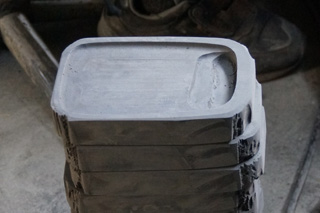
Stepping into the quarry
Upon arrival, we were taken to the Ogatsu stone quarry. An impressive place where the rugged cliffs reached high, but Takahashi of Ogatsu Inkstone Cooperative who took us there said, ”we are standing in a location that also used to be part of the mountain.” This meant that what was now a flat piece of land, actually used to be part of the mountain.
We previously visited a quarry in Yamanashi Prefecture, where they mined for stone to make Amahata inkstone, and the quarry there was like a cave. In the Ogatsu stone quarry, they don’t dig underground, but instead cut the stone which is exposed on the surface, a method called open-cast mining. That means the mountain’s surface is all Ogatsu stone. When the stone is shaved from the surface, the visually beautiful portion of the stone are used for inkstones, while the other parts which are easier to process are used for roofing or flooring materials.
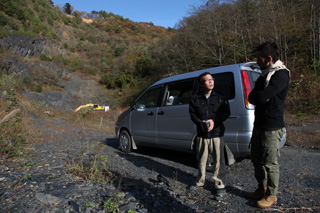
Inkstones carved by artisans
Ogatsu inkstones, with 600 years of history, is known for inkstone production, and is said to have accounted for 90% of total Japanese inkstone production at one time. At the time, there were many artisans with many people taking part in the process through division of labor between miners, carvers and polishers. However, the town of Ogatsu, which is situated in a cove of Ojika Peninsula, was greatly damaged by the Great East Japan Earthquake, and houses, workshops, and almost the entire lifeline was destroyed. Now, they have set up a cooperative office and a workshop in the temporary shopping district. Although complete division of labor is not yet possible, many people are participating in inkstone making.
During this visit, we had the privilege to observe the work of Ichio Endo, an inkstone artisan. He is a veteran with 50 years experience.
We were impressed by the way he used the chisel. Normally, you imagine that chiseling would be done with your hands. But it was not so in his case. He would place his shoulder against the butt end of the handle, and chisel the stone using the force of his whole body. This strength is necessary to carve the stone into the shape of inkstones. He follows with a more delicate chisel to flatten the surface. This is a very delicate process. Ink sticks cannot be ground smoothly if the surface is not flat.
This is not the end. The inkstone is polished further with sandpaper. ”Touch it”, said Endo, handing the inkstone to us. We were impressed by the smoothness, but ”it’s still too rough” he commented, using even finer sandpaper. ”Because the surface is very smooth, it takes more time to grind ink sticks than other inkstones, but the ink will have a beautiful luster” explained Endo. The stone from the mountain is shaped into inkstones by human hands, and a lot of time and effort goes into polishing them. The final product is almost like a work of art.

